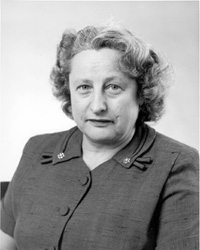Dean Wei presents Alice H. Lichtenstein, DSc, with the 2022 Mary Shorb Lecture in Nutrition plaque following her presentation.
Image Credit: Jonathan Stephanoff
GMO versus modified foods. Farm raised versus wild caught. Cage-free versus free-range versus farm-raised. Natural versus refined versus processed. The list could go on, but it is no secret that there are all kinds of labels and categories for our food. All you have to do is walk an aisle in a grocery store to get a sense of why there may be some confusion about what exactly you are putting in your cart.
“Nutrition Information, Misinformation, and Disinformation: A Call to Action” was the title of the 2022 Mary Shorb Lecture in Nutrition, delivered on Dec. 12 by Alice H. Lichtenstein, DSc., who is the Gershoff Professor of Nutrition Science and Policy at Tufts University. Dr. Lichtenstein’s approach to nutrition science is that nutrition research leads to nutrition communication, which in turn leads to nutrition policy, and she has been involved in every step of that path.
Dr. Lichtenstein’s career research has focuses on assessing the interplay between diet and cardiometabolic risk factors. Past and current work includes addressing issues related to trans fatty acids, soy protein and isoflavones, sterol/stanol esters, novel vegetable oils differing in fatty acid profile and glycemic index, primarily in postmenopausal females and older males. Additional work is focused on population-based studies to assess the relationship between nutrient biomarkers and cardiovascular disease risk, application of systematic review methodology to the field of nutrition and most recently the impact of taste perception on diet quality.
In her lecture, Dr. Lichtenstein began by discussing a series of perception studies highlighting the importance of clear and simple nutrition label information. For instance, if you were picking a healthy juice off the store shelf would you choose one labeled ‘all natural,’ ‘100% juice,’ or ‘no sugar added’? The surveys revealed a high level of misunderstandings by the public and the challenges of conflicting information.
When it comes to nutrition research communication, she advised thinking carefully and creatively in messaging. Unintended consequences in nutrition play out with health ramifications, and while this has a lot to do with how media outlets cover health information, it benefits the researchers to keep in mind how they discuss their findings.
Dr. Lichtenstein closed by offering some solutions to improve nutrition information and public health. Focusing on larger dietary patterns of individuals leads to better health outcomes–simply adding the latest ‘superfood’ to an otherwise poor diet doesn’t improve nutrition significantly. Mandatory food and nutrition education would improve healthy eating habits and help improve individuals’ ability to sift through nutrition information, misinformation, and disinformation.
 The Lecture series is named for Mary Shaw Shorb who received her B.S. in Biology from the College of Idaho (1928) and her Sc.D. in Immunology from Johns Hopkins University (1933). In 1942, she took her first research position at the Bureau of Home Economics and Human Nutrition of the USDA at Beltsville. Two years later, she transferred to the Bureau of Dairy Industry (USDA) where she was tasked with culturing Lactobacillus lactis Dorner (LDD), which was being used to make various fermented Dairy products. The media used to grow LDD required liver extract, which led Dr. Shorb to hypothesize that LDD could be used as a rapid biological assay to identify the anti-pernicious anemia factor identified in liver, for which Minot and Murphy shared the 1934 Nobel Prize in medicine.
The Lecture series is named for Mary Shaw Shorb who received her B.S. in Biology from the College of Idaho (1928) and her Sc.D. in Immunology from Johns Hopkins University (1933). In 1942, she took her first research position at the Bureau of Home Economics and Human Nutrition of the USDA at Beltsville. Two years later, she transferred to the Bureau of Dairy Industry (USDA) where she was tasked with culturing Lactobacillus lactis Dorner (LDD), which was being used to make various fermented Dairy products. The media used to grow LDD required liver extract, which led Dr. Shorb to hypothesize that LDD could be used as a rapid biological assay to identify the anti-pernicious anemia factor identified in liver, for which Minot and Murphy shared the 1934 Nobel Prize in medicine.
After being bumped from her position at USDA in 1946 by the returning veteran who had held the position prior to the war, Dr. Shorb was given laboratory space and an unpaid appointment in the Poultry Husbandry Department of the University of Maryland. With an initial grant from Merck & Company, she developed an LDD bioassay to quantify the concentration of anti-pernicious factor in liver extracts. This assay allowed her collaborators at Merck & Company to rapidly purify and crystalize the substance they named vitamin B-12, which was rapidly proven to be therapeutically effective for pernicious anemia. She and her collaborator, Dr. Karl Folkers (Merck) were corecipients of the Mead-Johnson Award of the American Institute of Nutrition in 1949 for this work. In 1970, two years before Dr. Shorb’s retirement from the University of Maryland, Merck & Company donated $10,000 to establish a Shorb Lectureship in Nutrition to honor and perpetuate her legacy.